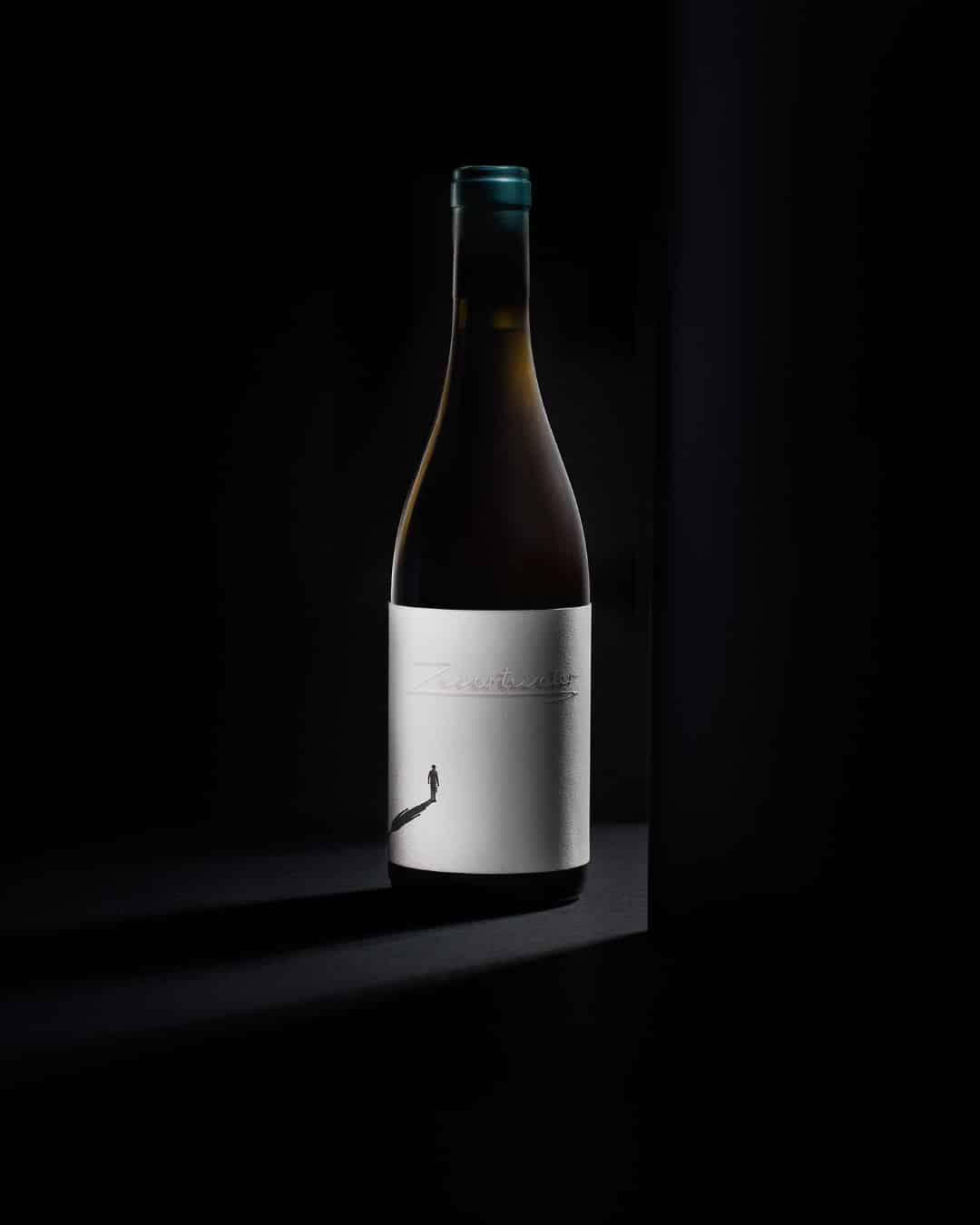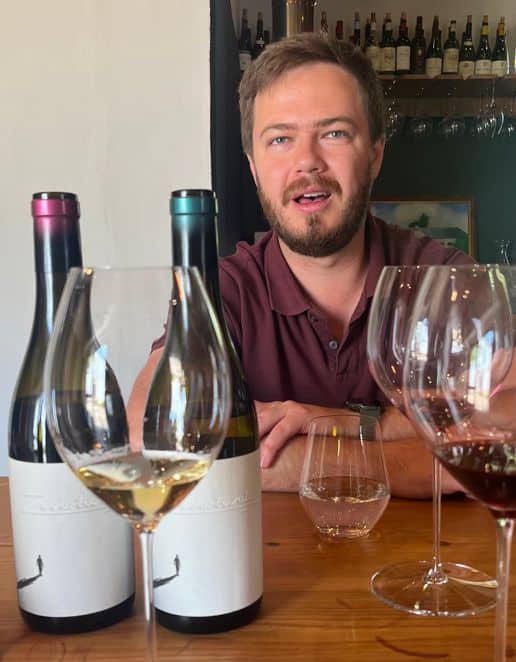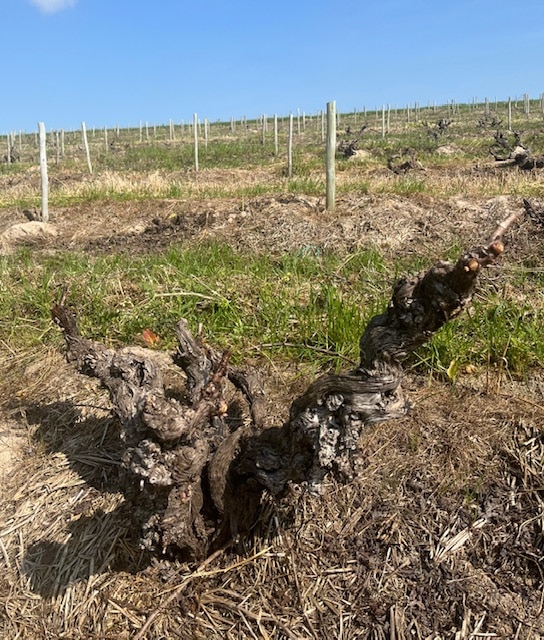Tim James: Zwartwater wines part of radical plans at Lammershoek
By Tim James, 8 September 2025

1

There are few estates that I have written about as often in the past few decades than Lammershoek. Often I wrote with hope that the latest reincarnation of (or vision for) this, one of the finest wine properties in the Swartland, would prove definitive, lasting and fully satisfactory. Vain hopes indeed. Now I must report that the name is to disappear entirely (except in very small print) from wine labels. Yet I do so cheerfully enough because there’s every chance that in the years to come it will acquire a new lustre of a somewhat different and unexpected, but firmly based character. Not to mention the fact that there are also two very good new wines designed to express the estate’s terroir.

Stefan Johannes.
Just four years ago, I reported hopefully on this website about developments on Lammershoek and the seeming arrival of positive stability; then, two years later, after the Abolds – who’d invested deeply in the property – had had to return to Germany for health reasons, I wrote about the arrival of new owners, the Johannes family. CEO and winemaker Stefan Johannes told me of having realised the need to have a fundamental rethink about Lammershoek and how to rebuild its image and its projected stability as a producer of fine Swartland wines. “We’re not in a hurry”, I quoted him as saying. Getting things right is what counts, he said, and making the best of what the farm delivers.
Last week I visited Lammershoek, with the Swartland looking its best on a gorgeous spring day, and heard about Stefan’s vision – and tasted an instalment of one element of its future. Stefan is this week releasing two 2024 wines, a red and a white (a 2025 rosé will follow), the first under the Zwartwater label – named for the original Mpumalanga family farm and with, incidentally, a generous go-ahead from Francois Haasbroek of Blackwater Wines. Both wines bear the smaller description “Lammershoek Estate Wine” and declare their origin as WO Paardeberg, Swartland. Another incidental: I think Alheit is probably the only other user of this fairly recently declared ward name, for their Fire by Night; Badenhorst uses Swartland, as does Eben Sadie for his Paardeberg wines; I do wish they’d all use the ward name.
The Zwartwater brand is one element of the Lammershoek vision. Another is that the estate’s name should become well known as the source of grapes for several high-end producers. Van Loggerenberg’s wonderful Kameraderie chenin has been sourced here for a good few years, and from the 2025 vintage a number of other producers are also making individual wines from Lammershoek grapes, including Rall (from the old chardonnay vineyard planted by Pongràcz), Wolf and Woman, Blank Bottle, and Albert Ahrens. Models for this sort of venture would include Karibib, the Polkadraai Hills farm which has been responsible for much of the hugely burgeoning reputation of that area in the past decade, through the famous wines being made from its expertly grown grapes.
The Lammershoek grapes are being sold for a good price, Stefan says, reflecting both the quality of the terroir and the expensive, careful viticulture. There are already some splendid old vineyards here, and there’s plenty of room for more plantings. At present, areas without vines are being farmed by a neighbour for other crops, to bring them to a healthy condition; Lammershoek will hope to start a slow (and horribly pricey) process of vineyard planting at some stage in the not-too-distant future.

As for the old vines, Stefan showed me what they’ve been doing in the chenin vineyard originally planted in 1968. One of the old vines is shown in the photo above; each of the poles you can see marks a young, interplanted vine. About half of all the vines in a four-hectare block have been replaced (each vine needing ongoing individual watering – a major expense of labour time and tractor fuel). This of course brings to the fore the issues about registered heritage vineyards I discussed a few months back: in this case Lammershoek has very honestly withdrawn registration with the Old Vines Project: what was important was the health and vitality and survival of the vineyard as a whole.
To the new wines. Zwartwater White 2024 reminded me instantly of previous bottlings of Lammershoek chenin and chenin-based blends. It’s always been the great grape of the Paardeberg, and distinct in its Lammershoek evocation, with great ability to mature beneficially in bottle. This current wine, enticingly aromatic, includes viognier (13%), hárslevelű (10%) – adding a mysterious green freshness, and marsanne (4%). It’s light-feeling, lifted, and refinedly elegant, with a stony edge and good length. A bit of sugar gives a roundness rather than sweetness. Just a little new oak, which probably adds to the feeling of polish, and 30% matured in concrete eggs (this percentage was upped to 75% in 2025 so much did Stefan like its contribution).
There are plenty of red varieties grown well on Lammershoek, including pinotage and tinta barocca – which from 2025 are going into what promises, judging by a tank sample, to be a rather remarkable and even powerful rosé. But the 2024 Red adds just carignan (27%) and mourvèdre (5%) to a syrah base. Like the White, this declares an alcohol level of 13.5%. It’s a fine example of the genre: red-fruited, delicate and fresh, but with complex and generous ripe aromas and flavours, in a vibrant, beautifully structured whole, crisp and properly dry.
Both wines should sell for R395 retail. It’s perhaps a brave demand to be making right now for a new brand, with wine trading conditions in a pretty parlous state, but both wines are undoubtedly worth it. The packaging is attractive, with the wrap-round labels shading from dark at the back to light on the display side that features a figure advancing, as it were, towards the source of the light, and casting a long shadow. The new website (with rather too much story about the family and not enough about Lammershoek, I feel) doesn’t indicate this price, but does give contact details and an invitation to buy. And an invitation to visit and taste at one of the most appealing farms in the Swartland. The Paardeberg is a magic mountain well justifying taking the dusty rutted road off the R44 outside Malmesbury.
Stefan Johannes is brimming with intelligent confidence. He’s just 30, and the small team he’s built to take Lammershoek forward – farm manager, winemaker and marketing manager, not to mention wife Lizaan who, on the day I visited, was working in the truly splendid succulent gardens that surround the winery buildings and the entrance – are also young and energetic. Times are indeed difficult for most wine producers, but Lammershoek seems to have a well-thought-out strategy for a project (quite beyond the Zwartwater wines) that will add real value to the Paardeberg and the district as a whole. We must wish all involved well in their custodianship of this great, often troubled Swartland estate.
- Tim James is one of South Africa’s leading wine commentators, contributing to various local and international wine publications. His book Wines of South Africa – Tradition and Revolution appeared in 2013.







Tim James | 9 September 2025
In my list of those eminent producers making wine from Lammershoek grapes I forgot to include the fine chenin made by André Bruyns for City on a Hill. Sorry!